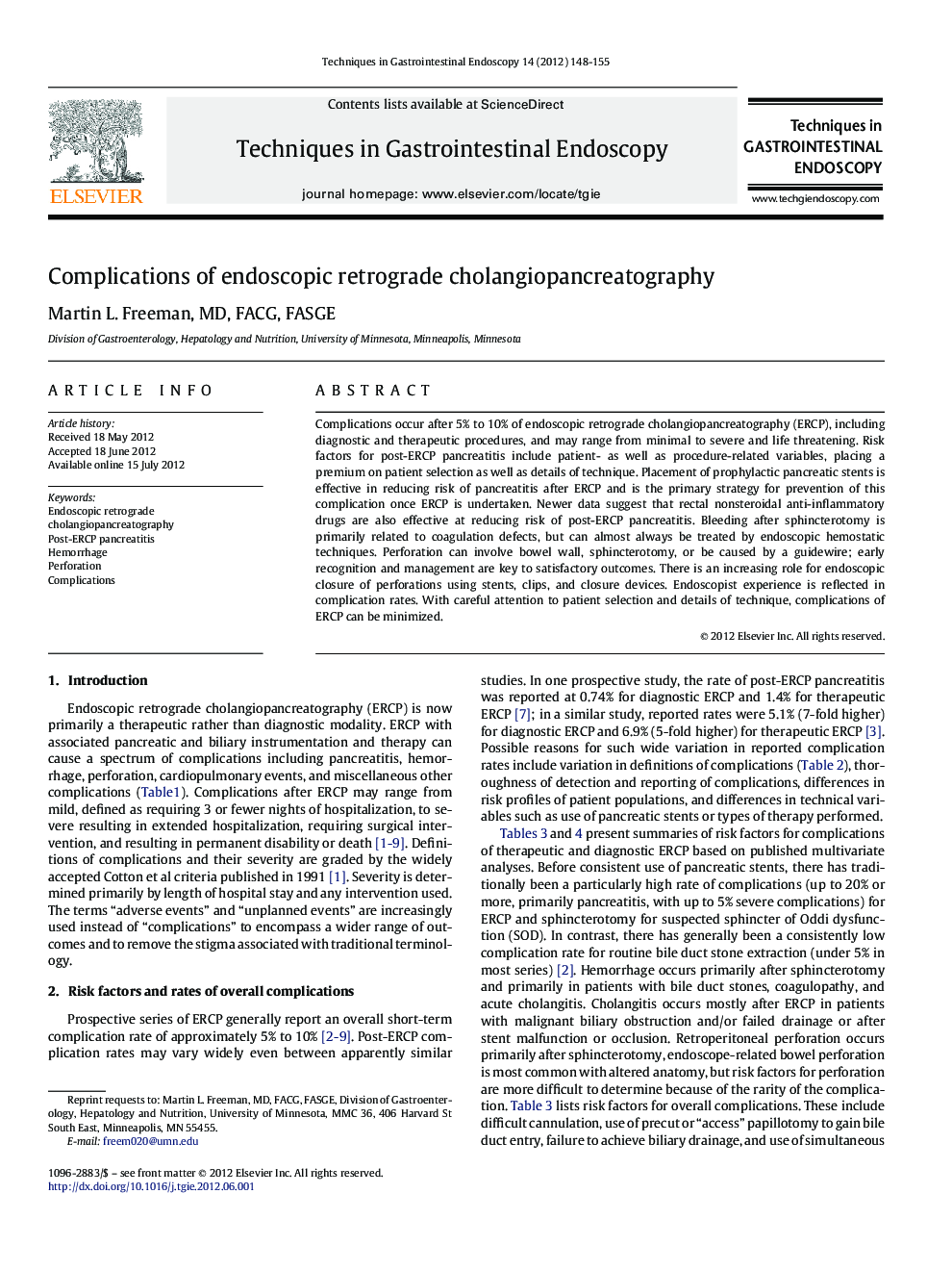| Article ID | Journal | Published Year | Pages | File Type |
|---|---|---|---|---|
| 3322616 | Techniques in Gastrointestinal Endoscopy | 2012 | 8 Pages |
Complications occur after 5% to 10% of endoscopic retrograde cholangiopancreatography (ERCP), including diagnostic and therapeutic procedures, and may range from minimal to severe and life threatening. Risk factors for post-ERCP pancreatitis include patient- as well as procedure-related variables, placing a premium on patient selection as well as details of technique. Placement of prophylactic pancreatic stents is effective in reducing risk of pancreatitis after ERCP and is the primary strategy for prevention of this complication once ERCP is undertaken. Newer data suggest that rectal nonsteroidal anti-inflammatory drugs are also effective at reducing risk of post-ERCP pancreatitis. Bleeding after sphincterotomy is primarily related to coagulation defects, but can almost always be treated by endoscopic hemostatic techniques. Perforation can involve bowel wall, sphincterotomy, or be caused by a guidewire; early recognition and management are key to satisfactory outcomes. There is an increasing role for endoscopic closure of perforations using stents, clips, and closure devices. Endoscopist experience is reflected in complication rates. With careful attention to patient selection and details of technique, complications of ERCP can be minimized.
